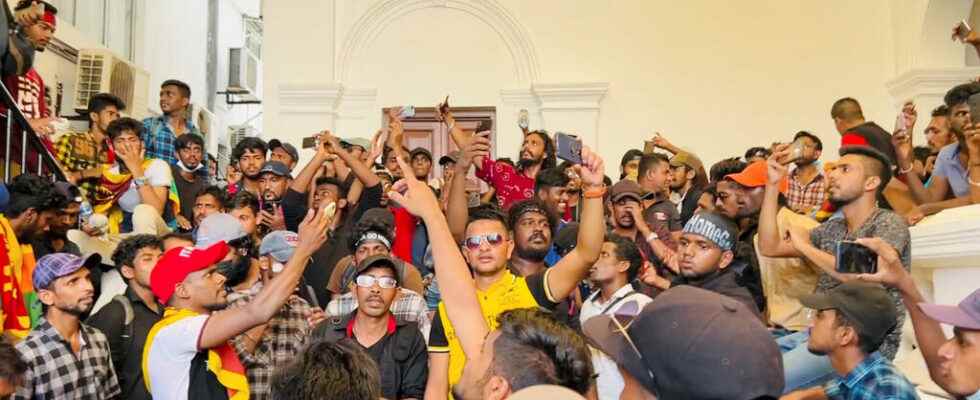Sri Lankan protesters announced on Thursday July 14 that they were ceasing to occupy the presidential residence and the prime minister’s office. The situation remains unclear, while the president, on the run in the Maldives, and the Prime Minister, appointed interim president, have still not resigned despite their commitment to do so.
After a day of struggling to win the Prime Minister’s office, calm reigns in the political center of Colombo on this Thursday, July 14. Sri Lankan protesters, who forced President Gotabaya Rajapaksa to flee the country after his residence was invaded last weekend, announced they would evacuate public buildings that had been occupied for several days, despite having announced that they intended to stay there until a national unity government was appointed. ” We peacefully withdraw from the presidential palace, the presidential secretariat and the offices of the Prime Minister with immediate effect, but we will continue our fight “said a spokeswoman.
Constitutional vagueness
Confusion therefore remains on the evolution of the situation, the Prime Minister and the President still not having resigned. This expectation has further fueled the anger of the demonstrators, who are demanding the resignation of the two men and have waited in vain for them throughout the day on Wednesday. The country is plunged into a constitutional blur, reports our special correspondent, Come Bastin.
► To listen: The ex-president of Sri Lanka on the run: “The population will not accept that he manipulates the system»
Hashita, a 25-year-old student, is revolted: ” I am disappointed, angry, sad, I have no words. The president did not send the letter of resignation he had promised. The Prime Minister inherited his power but does not want to resign either. »
The political configuration described by the young woman is surprising but not illegal, explains Gehan Gunatilleke, constitutional law expert in Colombo. ” Gotabaya Rajapaksa gave his powers to the Prime Minister according to Article 37 of the Constitution. It is supposed to be an exceptional measure when the president cannot exercise. But no time limit is set by law. In theory, legally, Ranil Wickremesinghe can therefore act as interim president indefinitely. But this is of course an untenable situation. »
Only the resignation of Rajapaksa can force the formation of a new government and allow the impasse to be broken, explains Gehan Gunatilleke: “ once the president leaves power, the prime minister remains invested but the Assembly will be responsible for quickly forming a new government. It is therefore important that the demonstrators let the deputies do their job to get out of the crisis. »
hated clan
The Rajapaksa have concentrated power to such an extent that the country has come to resemble an autocratic family business, unaccountable to anyone and pushing the nation into bankruptcy. The small country ran into huge debt with China by launching large development projects, under the presidency of Mahinda Rajapaksa between 2005 and 2015. It lost the presidential election of 2014, but the dynasty had not however, the intention to relinquish power.
► Also to listen: Sri Lanka, a country on the brink but standing
Elected in 2019, Gotabaya gradually reinstalled his family as head of state and implemented sweeping tax cuts, despite international warnings against him, causing a huge drop in government revenue. Against the advice of economists, the Rajapaksa have long refused to turn to the International Monetary Fund (IMF). Instead of relying on outside aid, the government restricted imports, plunging the island into an unprecedented crisis. Sri Lankans have found themselves deprived of essential goods and today the country, riddled with shortages, lack of fuel, gas, food and medicine.
